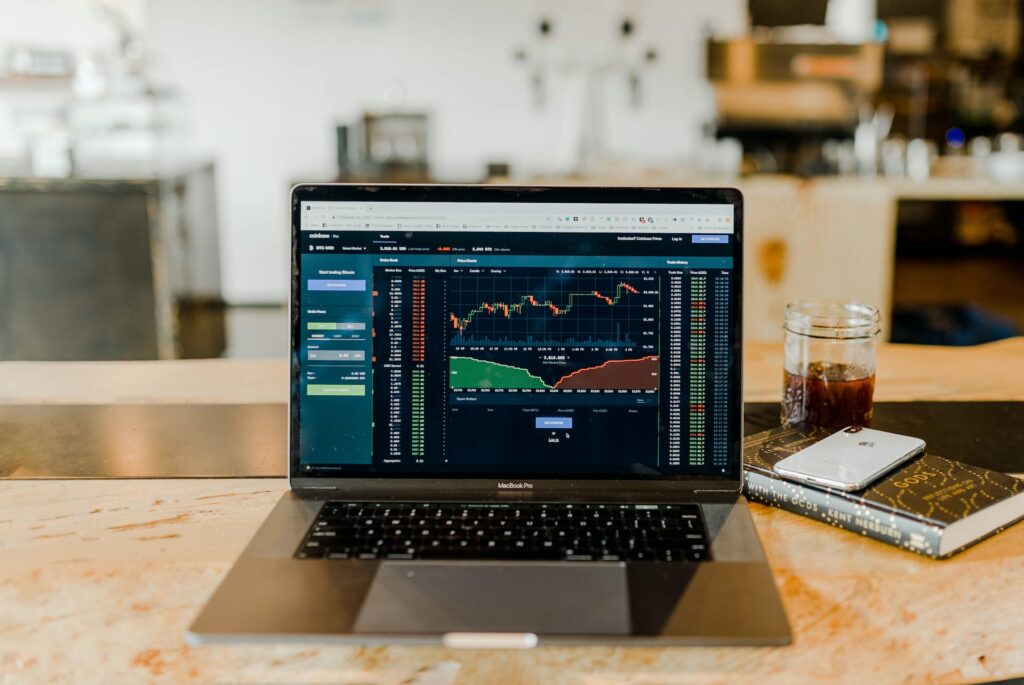The S&P 500 index keeps track of the 500 biggest companies in the U.S. The S&P Index Committee decides which companies to include based on a number of factors, such as market capitalization, sector allocation, and liquidity.
But what if you want to buy S&P 500 stocks and don’t have the time or patience to look at 500 different companies? You could use an S&P 500 index fund or exchange traded fund (ETF) to invest in all of those stocks.
In 1976, Vanguard set up the first mutual fund for individual investors in the U.S. The goal was to make it look like the S&P 500 Index. A subsidiary of AMEX created the first ETF 17 years later. This made it possible for investors to start following the index.
Almost all of the big brokerages and fund companies now have at least one type of S&P 500 fund. Investors can use financial advisors, full-service brokers, or discount brokers to get access to these funds. If you need help, we’ll explain some of the basics of investing in ETFs and mutual funds that track the S&P 500.
What is S&P 500 Index?
The S&P 500 Index was the first market-cap-weighted equity index in the United States. It was created in 1957, and many people think it is the best single measure of large-cap U.S. stocks. The index is the most important equity index in the world, and trillions of dollars are based on it.
The index is usually made up of 500 of the biggest companies in the United States, but this number can change. The S&P 500 accounts for roughly 80% of total market capitalization in the United States. The stocks in the index have a median market value of $31.7 billion, and the highest is $2.85 trillion.
The S&P 500 stocks contain many of the growth drivers of the US economy. For example, here are the top 10 stocks by index weight that make up the S&P 500:
- Apple
- Microsoft
- Amazon
- Tesla
- Alphabet (class A shares)
- Alphabet (class C shares)
- Nvidia
- Berkshire Hathaway
- Meta Platforms
- UnitedHealth Group Inc.

Index funds vs. ETFs
You can’t directly invest in an index because it’s just a way to measure the performance of the securities it’s made up of. You can invest in an index through exchange-traded funds (ETFs) and index funds, which try to match the performance of certain indexes.
ETFs are based on passive index replication, which gives investors access to all of the securities in an index. So, investing in an S&P 500 ETF gives the investor access to all the stocks in that index. Index ETFs are usually cheap, and they trade all day long just like stocks. Because of this, they are very liquid and their prices can change during the day.
Using an index fund to buy shares in the S&P 500
Index funds that track the S&P 500 typically own the majority or all of the stocks in the benchmark index, allowing their performance to be as close to that of the index as possible. Then, they sell shares of the fund so that you and other investors can buy access to the hundreds of investments that make up the fund.
There are numerous S&P 500 index funds available, so here are some things to look for to ensure you select the right one for your portfolio:
Expense ratio
Index funds are passively managed, which means that the fund managers just buy and sell stocks to keep the fund’s asset allocation in line with the benchmark. There isn’t a lot of research or trading that needs to be done. This keeps the fees you pay to keep your fund running, called expense ratios, at a very low level. Almost all S&P 500 index funds do about the same, so it’s important to choose the one with the lowest expense ratio.
Minimum investment
Whether you buy index funds for a taxable investment account or a tax-advantaged retirement account, the minimum investment amount is different. As you compare different S&P 500 index funds, make sure the minimum purchase amounts match the amount you have to invest. After you get past that first step, you can usually buy fractional shares in any dollar amount you want.
Dividend yield
One of the benefits of investing in the large-cap companies that make up the S&P 500 is that you can get dividends. Be sure to compare the dividend yields of different S&P 500 index funds, as dividends can boost returns even in down markets.
Inception date
It’s important to pay attention to when an index fund was started. When you look at choices with longer histories, you can see how an index fund did in bull markets and how it kept losses down in bear markets.
Using an ETF to buy shares in the S&P 500
Passively managed ETFs try to match the performance of a market index like the S&P 500, just like index funds do. Managers buy a basket of securities that have the same holdings as the benchmark index and then sell shares to investors.
Here is how ETFs are different: The shares that an ETF gives out trade like stocks, and their prices change all day long. Index fund shares, on the other hand, only trade once a day, at the end of the day when the markets close. For traditional investors who buy and hold, the difference isn’t that big.
You should choose an S&P 500 ETF based on many of the same key factors you’d use to choose between index funds:
Expense ratio
The performance of S&P 500 ETFs is nearly identical to that of S&P 500 index funds. You should always choose the fund with the lowest expense ratio since higher costs do not guarantee better returns on the same index.
Liquidity
ETF liquidity isn’t something that buy-and-hold investors need to worry about too much. But if you’re an active investor with a taxable brokerage account, it’s worth figuring out how an ETF’s liquidity could affect your strategy. Funds that trade more often are more liquid, while funds that trade less often are less liquid.
Inception date
The more economic cycles an ETF has been through, the longer it has been around. The more market booms and busts a fund has been through, the more confident you can be in its ability to keep doing well over time.
Dividend yield
The dividend yield of S&P 500 ETFs, like that of index funds, shows how much the companies in the benchmark index pay in dividends each year for every dollar invested. When picking an S&P 500 ETF, you should make sure that its dividend yield is at least the same as the best ones, if not higher.

There are pros and cons to investing in the S&P 500
If you’re still not sure about an index ETF or fund, think about how long it would take you to research each stock individually. After all of that time and effort, you may discover that your investments did not perform as well as they would have if you had simply purchased an S&P 500 index fund or ETF. This is because it is very hard to beat the market.
By investing in an S&P 500 ETF or fund, you can get exposure to many of the most dynamic companies in the world’s largest economy. It gets rid of the need to spend a lot of time analyzing and choosing stocks. And over the long term, the index has always done well. For the ten years ending March 31, 2022, the S&P 500 had an annualized return of 14.64 percent.
Here are some of the most common reasons to invest in or not invest in this index.
Advantages
Investing in the S&P 500 has a number of advantages, such as:
Exposure to the world’s most dynamic companies
Investing in the S&P 500 gives an investor access to some of the world’s most dynamic companies, like Apple, Amazon, Google, and Tesla.
Consistent long-term returns
Returns can vary a lot from year to year, but over a long period of time, the S&P 500 has done well every year.
You don’t have to do a lot of complicated research
If you invest in the S&P 500 through an ETF or an index fund, you don’t have to spend hours trying to beat the market by analyzing and picking stocks.
It can be a central holding: S&P 500 index funds and ETFs are both very liquid and have small bid-ask spreads. This makes S&P 500 funds and ETFs perfect for most investment portfolios’ core holdings and good for more advanced strategies like covered calls and hedging.
Disadvantages
Here are some of the main problems with putting money into the SP 500:
Large-cap companies make up most of the index
Large-cap companies make up most of the S&P 500. Its 10 biggest companies make up almost a third of the index. This means that the S&P 500 index doesn’t include any small-cap or mid-cap stocks, which could grow much faster than large-cap stocks.
The index has the risks that come with investing in stocks
Investing in stocks like the S&P 500 comes with risks such as volatility and downside risk. For example, in March 2020, the index lost almost a third of its value in just a few weeks amidst panic caused by pandemic. And this year again, S&P 500 lost 24% YTD, due to market volatility caused by recession fears, inflation and geopolitical instability. Some new investors may find it hard to handle this kind of volatility.
Only U.S. companies are on the list
The S&P 500 only has companies from the United States. It does not include companies from Asia or Europe.



